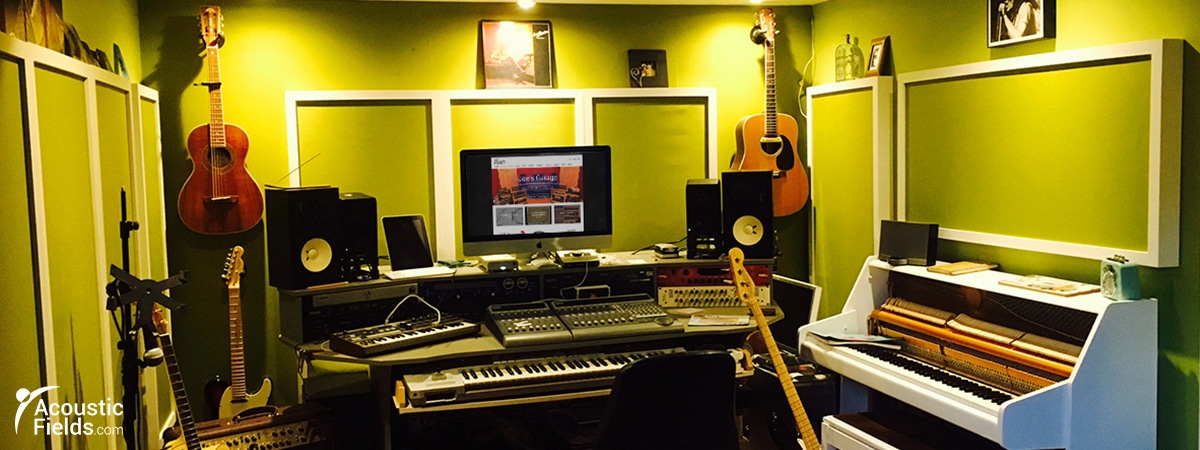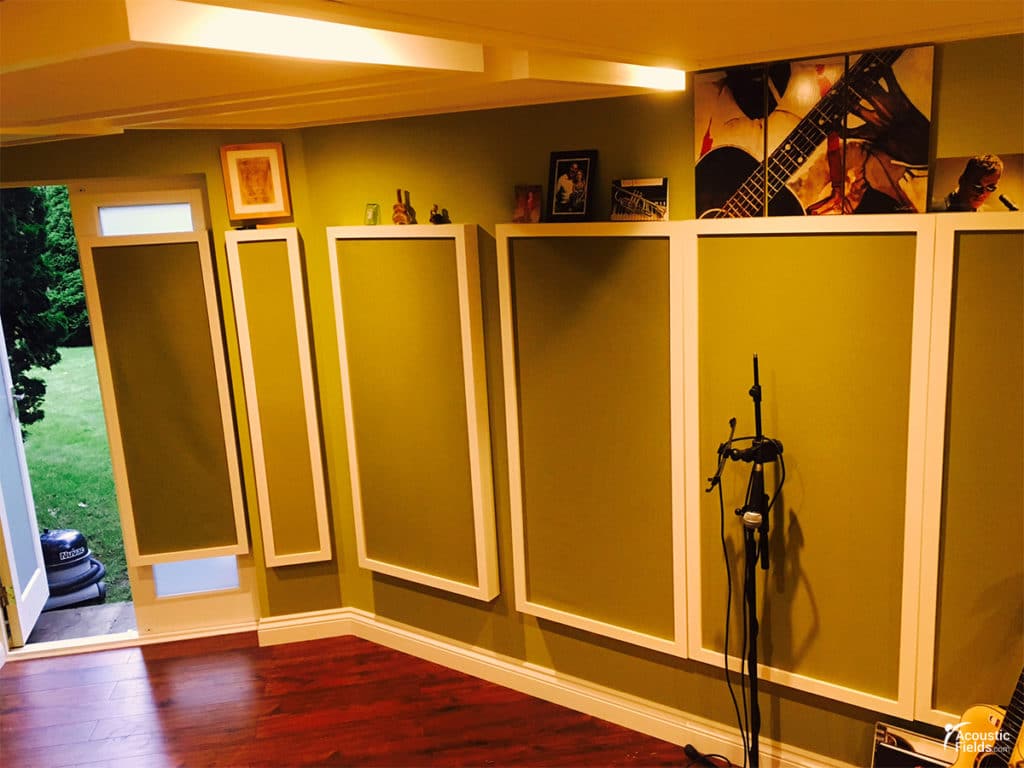
Table of Contents
Introduction
The terms acoustic treatment home studio must be broken down into two parts. When you are considering any form of acoustic treatment home studio you must first focus on the lower frequency issues. The low frequency fundamentals produce the middle and high frequency harmonics. If you don’t treat the lows properly, the mids and highs will suffer. Once you have the low frequency pressure issues managed you can then move to the mids and highs.
Acoustic treatment home studio is a step by step process that builds upon the last step taken. Skip a step accidentally or with purpose, you pay for it sonically at the end of the project. The elevator to success is out of order when it comes to the acoustic treatment home studio, you must take the stairs one step at a time. Let’s examine both parts of any small room that produce distortions that are audible. We have pressure and reflections.
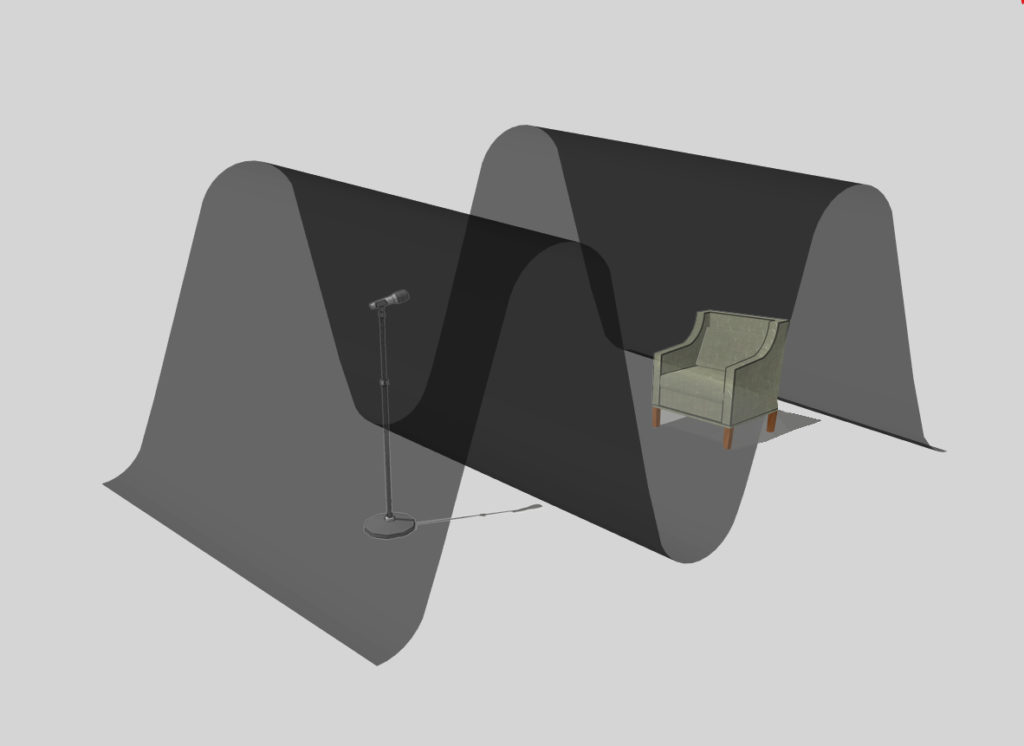
Dealing with Room Modes
Pressure issues in small rooms are determined by the dimensions of the room along with the room usage. How large the room is and how much energy are you going to place within it. Lower frequency energy for purposes of this article will be all energy below 100 hz. This frequency range is also referred to as “bass”. Lower frequency pressure waves are long and tall. A 40 hz. wave is 28′ long and 14′ high. It’s no wonder that a wavelength of this length and height will not fit into our room that has 8′ ceilings. To make matters even worse, the wave oscillates through our room like the ocean waves do at your favorite beach.
They just keep coming. When they assault the room every beat with their energy the air between the walls starts to move. The more energy into the room, the more the air excites. This excitation or movement of air between walls is termed a room mode. Room modes exaggerate certain sounds and completely eliminate others. You can not have any of this going on within any critical listening environment. This is the primary job of any acoustic treatment home studio application. You must treat all room modes. They are the most powerful of the two main issues which are pressure and reflections.

Balancing Direct and Reflected Energy
Reflections do not oscillate throughout the room like pressure waves do. Reflections are termed ray energy. Ray energy is shorter in length and thin. Think sunshine when you think of middle and high frequency ray energy. Think of ocean waves when you think of room modes. Middle and high frequency ray energy strikes the wall surfaces and is reflected back to us as the receiver. In any small room, there is a balance between direct and reflected energy. Direct energy is the straight line energy that radiates from a voice or instrument.
It is the sound that travels directly into your ears and strikes your ears first before it heads to the room walls. Once it strikes the room walls, it is reflected back to your ears. You have the wanted direct energy from source and the reflected energy from the room boundary surfaces. The sound quality you end up with is always a balancing act between the direct straight line energy from source and the reflected energy which is room sound. The goal of acoustic treatment home studio is to provide enough surface area coverage along with the proper rate and level of absorption.
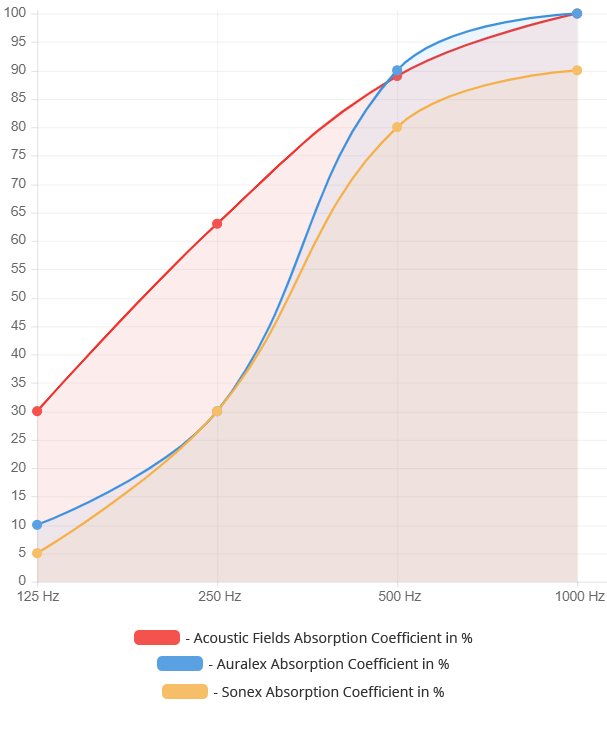
Rate & Level of Absorption in Home Studios
The most critical variable to consider when using any acoustic treatment home studio is the rate and level of absorption you are going to use within the room to treat the pressure and reflection issues. Rate is how much energy is absorbed at each frequency. Rate is the percentage absorbed at each octave band. When you are treating any pressure or reflection issue within your room, you always must consider how low the technology starts working at and how much energy is absorbed at each octave band as you move up the frequency scale.
You can see in the graph above that our foam Acoustic Fields has a smooth and linear response . Its rate of absorption at all octave bands is linear with no gaps or spatial irregularities. Notice the dips or spatial irregularities in the Auralex and Sonex foams. You would not treat the frequency range from 125 – 500 hz. with a technology that has errors in its response to your issues.
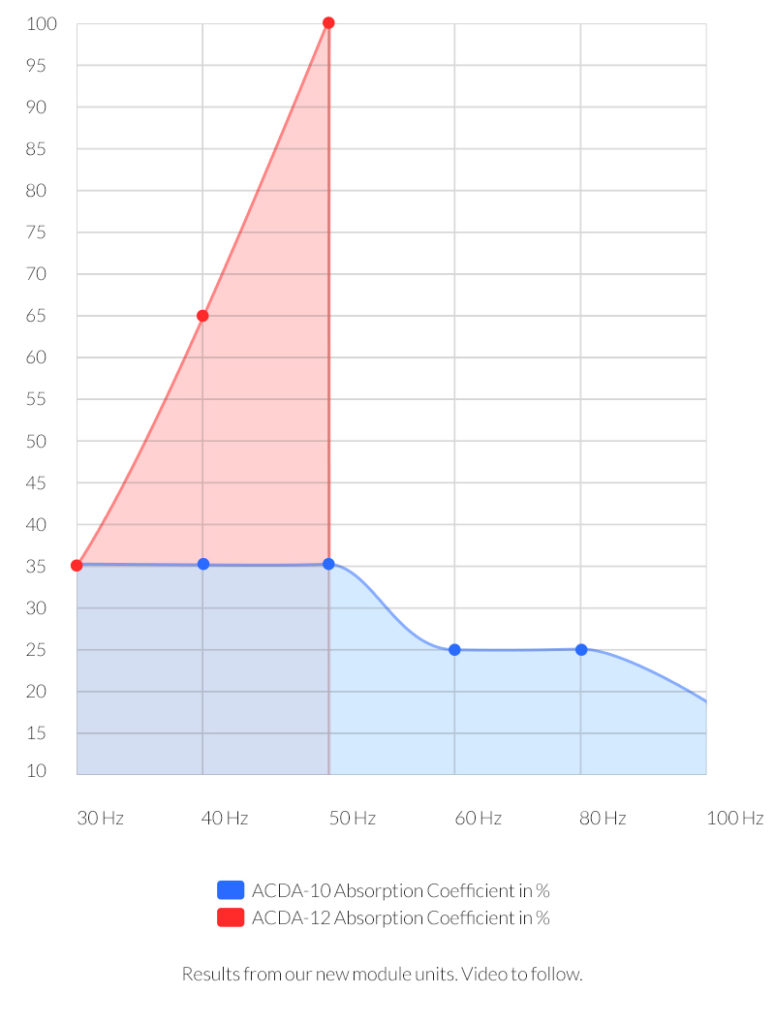
Rate and level is also critical when you are treating low frequency pressure issues. Low frequency absorption technologies that are used must go low enough and get enough. Any low frequency technology employed in any acoustic treatment home studio must have both of these rates and levels working smoothly and going in the proper rate of absorption. Notice the performance of our ACDA-12 unit which is our most powerful lower frequency absorption technology.
You can see it starts at 30 hz. which is the level. You can also see as the line rises the percentage of absorption for every square foot surface area of the technology. You are seeing 35% sq. ft. @ 30 hz, 63% sq. ft. @ 40, and 100% @ 50 hz. That is the proper rate and level to manage low frequency issues in any small room usage involving music and voice.


